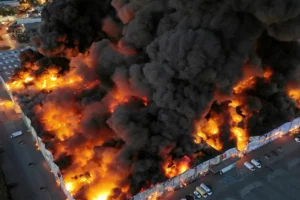Brandenburg Gate, Checkpoint Charlie, Museum Island and more. A trip to Berlin wouldn’t be complete without visiting these attractions and sights.
Brandenburg Gate
The Brandenburg Gate is Berlin’s most famous landmark. A symbol of Berlin and German division during the Cold War, it is now a national symbol of peace and unity.

The Brandenburg Gate is one of Berlin’s most important monuments, a landmark and symbol with over two hundred years of history. Hardly any other sight is on so many tourist selfies as the great sandstone gate in the heart of the city. The Brandenburg Gate used to be memorial of division – after the construction of the Berlin Wall, it was located in the restricted area and could not be visited by East or West Germans. After the fall of the Wall, the gate became a symbol of German unity.
Berlin TV Tower and Alexanderplatz
The TV Tower on Alexanderplatz is Berlin’s most prominent landmark and the tallest building in Germany. Its steel sphere contains an observation platform and a gourmet restaurant.
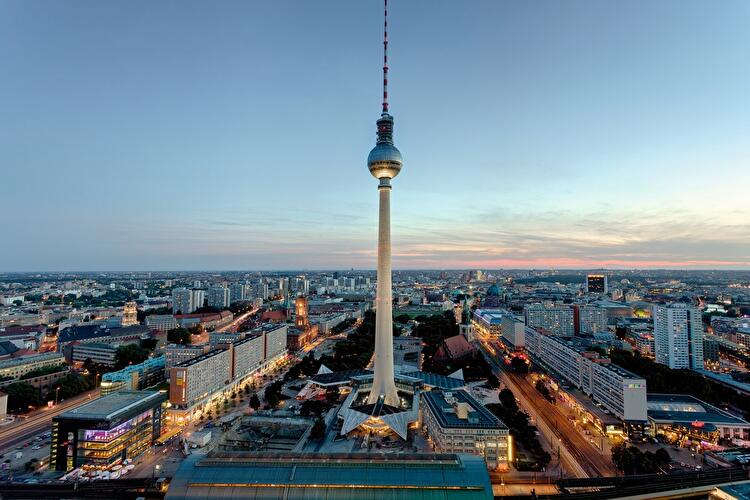
What would Berlin be without the TV Tower? Standing tall on Alexanderplatz, it is not only the tallest structure in Germany but also the city’s iconic landmark. Every day, numerous visitors take a speedy elevator ride up to the tower sphere to enjoy a wonderful view of the entire city. The best thing: you don’t even have to move to enjoy a panoramic view because the observation deck rotates once around itself within an hour.
Checkpoint Charlie
Checkpoint Charlie was the best-known border crossing between East and West Berlin during the Cold War. At the height of the Berlin Crisis in 1961 U.S. and Soviet tanks faced each other here.

The former border crossing Checkpoint Charlie is one of the most important and most visited sights in Berlin. The spot on Friedrichstraße that now attracts huge crowds of tourists from Germany and abroad used to be a military checkpoint during the time of German division. Even though the Wall has long since disappeared and the turnpikes and watchtowers of Checkpoint Charlie have been replaced by replicas, the interest in the former border crossing remains high. The Wall Museum is also located in the immediate vicinity.
Museum Island
Museum Island is a unique ensemble of five museums in the center of Berlin. The entire complex is listed by as a Unesco World Heritage Site.

Right in the heart of Berlin, nestled between the Spree River and the Spree Canal, lies the world-famous Museum Island. Every year, millions of visitors come to see the five museums, whose spectrum of collections ranges from prehistory to 19th century art. Not only the collections themselves are worth seeing – the ensemble of historic buildings on Museum Island is among the most beautiful architecture that Berlin has to offer.
Gendarmenmarkt
Gendarmenmarkt is arguably Berlin’s most beautiful square and the site of three impressive buildings: the German Cathedral, the French Cathedral, and the Konzerthaus.
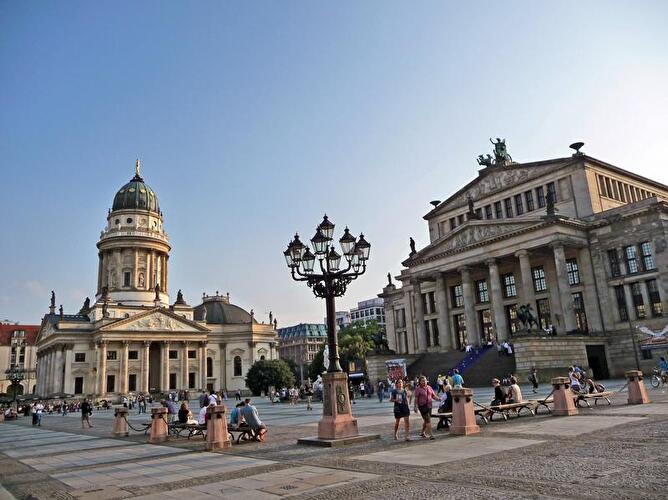
The Gendarmenmarkt square is best known for the building trio that frames it: the German the and French Cathedrals and the Konzerthaus (concert hall). Together, they form one of the most stunning architectural ensembles in Berlin. The eventful history of the Gendarmenmarkt can be traced back all the way to the 17th century. Each historical phase has left its architectural traces.
Holocaust Memorial
The Memorial to the Murdered Jews of Europe or Holocaust Memorial near Brandenburg Gate commemorates the up to six million Jewish victims of the Nazi Holocaust.
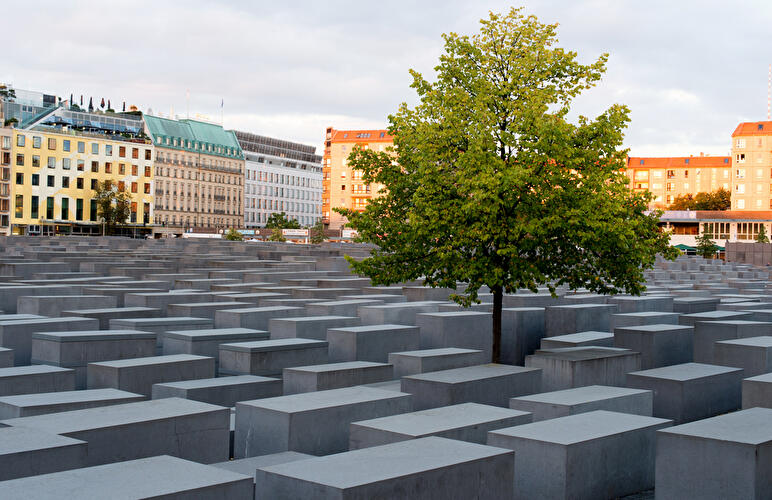
The Holocaust Memorial consists of an undulating field of 2711 concrete steles, which can be passed through from all sides. While walking between the columns of different heights and the labyrinthine corridors, visitors may experience a brief moment of disorientation, which should open up space for discussion. Beneath the memorial is the Information Centre, which documents the crimes of the Nazi era in themed rooms.
Reichstag
The Reichstag building with its famous glass dome is one of the most visited sights in Berlin. It is seat of the German parliament, the Bundestag.

Experience up close where politics is made by visiting the Reichstag building with its spectacular glass dome and roof terrace. The Reichstag building is one of the most visited sights in the city. No wonder – after all, decisions are made here that affect everyone’s life. The location on the Spree in the middle of the city center and the building itself do the rest. In the summer months, Berliners and tourists flock to the large lawn in front of the seat of government.
Kaiser Wilhelm Memorial Church
The Kaiser Wilhelm Memorial Church on Breitscheidplatz is one of Berlin’s most famous landmarks. The ruin of the old church has been converted into a war memorial.
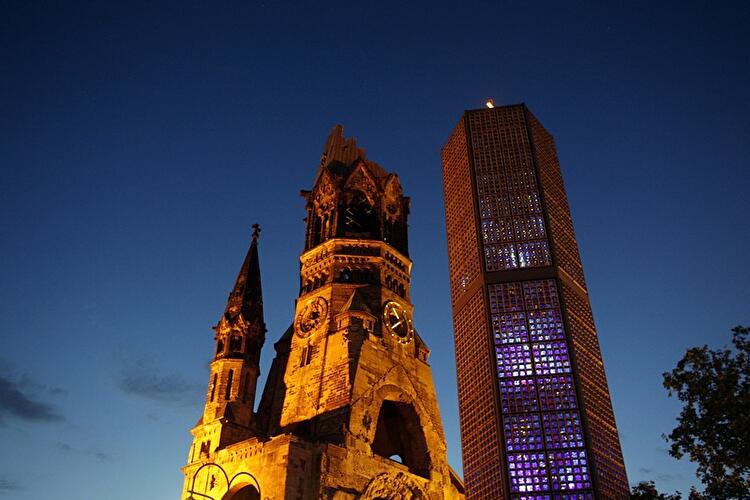
The Kaiser Wilhelm Memorial Church is the symbolic center of West Berlin and one of the city’s most popular sights. The original West Tower was partially destroyed during a bombing by the Allied Forces in 1943. Its striking ruin now rises into the sky as a memorial for peace between nations.
Victory Column
From a symbol of Prussian military victory to a popular tourist spot: Berlin’s Victory Column has reinvented itself through the ages.

Even from afar, the winged sculpture on the Victory Column in the west of the city shines brightly. The monument that was originally erected to commemorate Germany’s victories against other nations has long ago taken on a different meaning in the public imagination. Today, the Victory Column is closely linked to the techno festival Love Parade – every year, the closing rally took place at the feet of the famous monument. On top of the 69-meter-high column, a lookout point offers a great view over the Tiergarten and the nearby Bellevue Palace.
East Side Gallery
After the German reunification, artists have turned this former stretch of the Berlin Wall into the largest open-air gallery in the world.
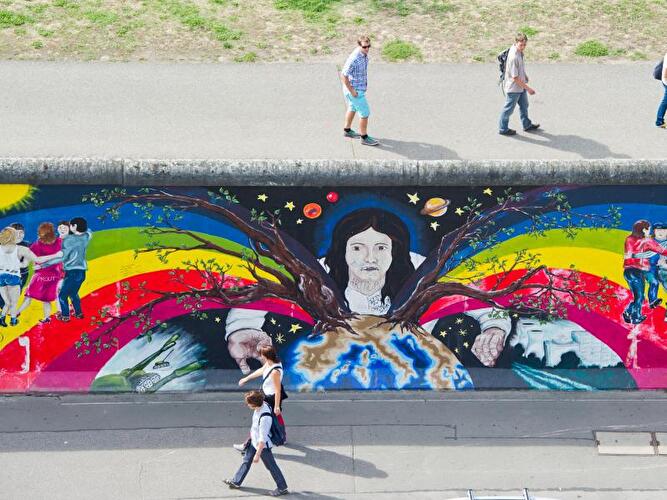
Hardly any Berlin visitors leave the city without taking a selfie in front of the East Side Gallery. The 1.3-kilometer stretch of the Berlin Wall was painted by various artists after the German reunification. The former gray dividing wall, a symbol of the Iron Curtain, was turned into the longest open-air gallery in the world. With their creative wall paintings, artists transformed the relic from times of separation into a colorful monument to the freedom of expression.
Source: berlin










